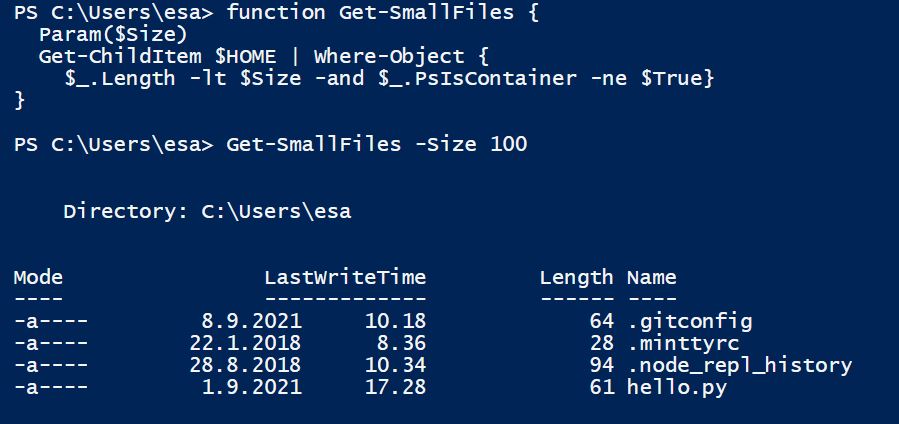Functions
The highest level of automation is functions, which are self-defined commands that internally use all of the PowerShell mechanisms.
What is Function?
So, a function is a list of PowerShell statements that has a unique name that you assign. When you run a function, you type the function name. The statements in the list run as if you had typed them at the command prompt.
Functions can be as simple as:
function Get-PowerShellProcess
{ Get-Process PowerShell }
A function can also be as complex as a cmdlet or an application program.
Function Parameters
Like cmdlets, functions can have parameters. The parameters can be named, positional, switch, or dynamic parameters. Function parameters can be read from the command line or from the pipeline.
The following example is a function called Get-SmallFiles. This function has a $Size parameter. The function displays all the files that are smaller than the value of the $Size parameter. Because we want files only we filter folders away.
function Get-SmallFiles {
Param($Size)
Get-ChildItem $HOME | Where-Object {
$_.Length -lt $Size -and $_.PsIsContainer -ne $True}
}
To call this function, just type the following command, remember pass the argument for the function.
Get-SmallFiles -Size 500

Function Return Value
Functions can return values that can be displayed, assigned to variables, or passed to other functions or cmdlets. You can also specify a return value using the return keyword. The return keyword does not affect or suppress other output returned from your function. However, the return keyword exits the function at that line.